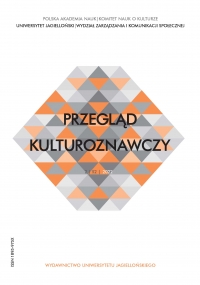Toksyczne przedmieścia. Radioaktywne dziedzictwo St. Louis w soczewce projektów Allany Ross
Toxic Suburbs. Radioactive Heritage of St. Louis in the Works of Allana Ross
Author(s): Magdalena Krzosek-HołodySubject(s): Visual Arts, Social Philosophy, Human Ecology, Rural and urban sociology, Political Ecology, WW II and following years (1940 - 1949), Post-War period (1950 - 1989)
Published by: Wydawnictwo Uniwersytetu Jagiellońskiego
Keywords: negative heritage; environmental history; radioactivity; contamination;participatory art; artivism;
Summary/Abstract: The article follows the radioactive history of St. Louis featured in the works of the artist and activist Allana Ross. Her artistic practice presents an interesting, interdisciplinary approach to the social and environmental problems connected to the radioactive contamination of the city. The aforementioned contamination (apart from the workers directly involved in the processing of the uranium ore) affected mainly the lower middle-class families living in the outskirts.From the early 1940s until the late 1960s St. Louis based chemical company Mallinckrodt was the major manufacturer of uranium utilized in the Manhattan Project and later on in the development of the American national atomic energy programme. As the result of the negligence of many social and political actors, the radioactive waste produced by Mallinckrodt spread over the city’s suburbs contaminating air, soil and water. These facts, however, were not publicly known for many years. Just recently they received the publicity that they demanded. Even though the radioactive contamination of St. Louis dates back to the 1940s, the affected areas had not been taken care of till the late 1980s, when the city was included into FUSRAP and Superfund programmes, which were established by the U.S. government to “clean the radioactive mess”left recklessly in the American landscape some decades ago.The author of the article adopts the notion of negative heritage introduced by Lynn Meskell (2002) to interpret the significance of the radioactive contamination of the region and contextualize the works of Ross. The artist herself understands her projects, which may as well fall into the recently established category of artivism, as adaptive strategies for the slowly approaching environmental catastrophe. In a more general sense Ross calls out not only for the redefinition of St. Louis negative radioactive heritage, but also for the new culture of nature and new modes of human –environment relations.
Journal: Przegląd Kulturoznawczy
- Issue Year: 52/2022
- Issue No: 2
- Page Range: 235-252
- Page Count: 18
- Language: Polish

